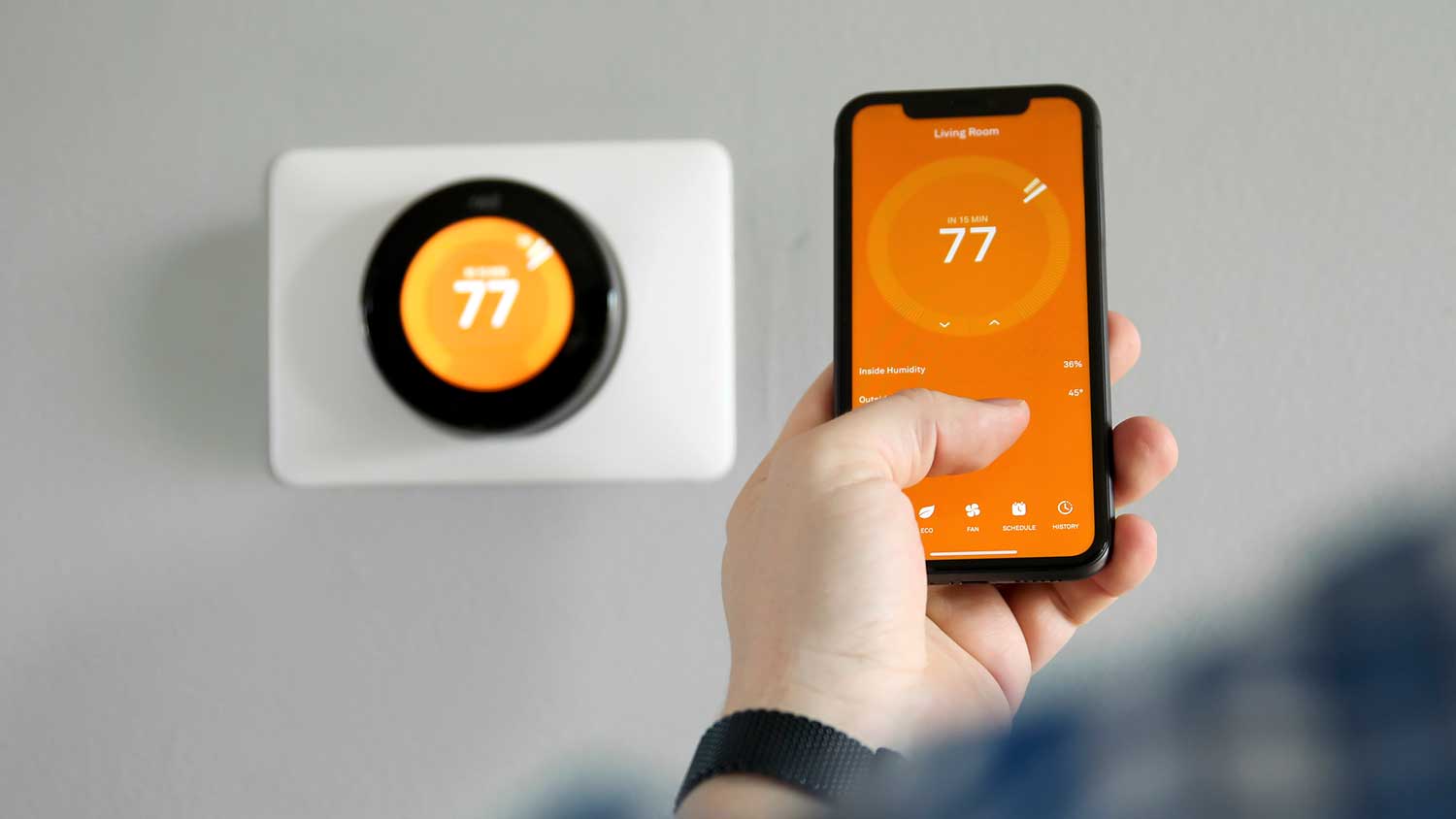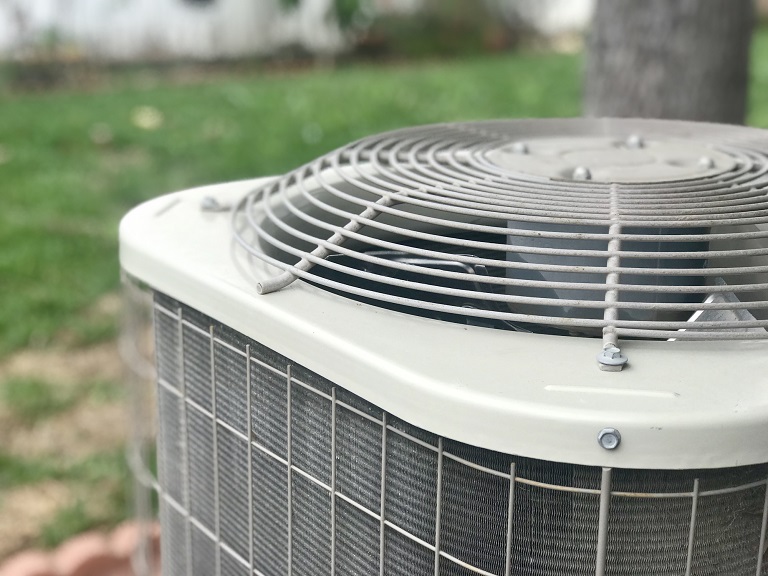
Discover the factors influencing air duct replacement costs in Atlanta, GA. Learn how to save money and make an informed decision for your home's comfort.
Study up on smart thermostats


A smart thermostat is a Wi-Fi-enabled device that connects to an HVAC system.
You can control a smart thermostat remotely via phone or smart home hub.
Smart thermostats cost $130 to $300 on average and offer more functionality than basic thermostats.
Smart thermostats are more complex to install, so you’ll need to hire a pro to help.
No one wants to sit sweating or shivering in their home, but fussing with an old thermostat that will undoubtedly crank up the HVAC system and your energy bills isn’t ideal, either. Enter the smart thermostat, which can help keep your home at a comfortable temperature year-round without costing a small fortune in energy bills. So what is a smart thermostat, how does it work, and is it time for you to upgrade? We can help answer that.
A smart thermostat is a type of thermostat that can connect to Wi-Fi so that you can control your thermostat from a separate device, like a smartphone or smart home hub. These systems also feature sensors that can detect energy usage and usage habits to tailor the heating and cooling settings to your liking without using more energy than needed.
Like any thermostat, a smart thermostat has a control panel with buttons so that you can set your temperature preferences. But unlike other types of thermostats, a smart thermostat also connects to Wi-Fi, allowing users to control the thermostat settings via phone or other smart device, like a smart home speaker. Alexa, crank up the heat!
Smart thermostats have a temperature sensor like other thermostats. However, smart thermostats also utilize the sensor to measure energy demand and automatically adjust the settings to save energy. A microcontroller within the device receives information from the sensors and the control panel or connected app and sends commands to the HVAC system through actuators. It’s like modern-day magic.
Smart thermostats are rising in popularity, but they aren’t the only option on the market. Programmable thermostats and non-programmable, or manual, thermostats can also help you control the temperature of your home. Programmable thermostats offer some of the functionality of a smart thermostat, such as setting specific temperatures for different times of the day or days of the week. Non-programmable thermostats allow you to change the temperature from the control panel as needed, but you can’t set the temperature to change in advance.
There are pros and cons to consider for each type of thermostat, so be sure to weigh these factors before deciding what thermostat to install in your home.

Smart thermostats have many benefits, especially if you’re looking to save energy or make heating and cooling your home more convenient.
Can be controlled by a phone or other smart home device
Saves energy
May have additional sensors to detect HVAC problems early
While smart thermostats can boost the efficiency of your HVAC system, there are some drawbacks to keep in mind before scheduling an installation appointment.
Cost more upfront
Can be more difficult to install
Require strong Wi-Fi connection
Programmable thermostats allow homeowners to change the temperature settings as needed or schedule temperature changes for the future from the thermostat’s control panel. Those aren’t the only benefits of programmable thermostats.
Easy to use
Good value, balancing cost and functionality
Can save energy when set to optimal temperatures in advance
Programmable thermostats are a good middle-ground between smart models and non-programmable models. They do have some drawbacks compared to the other two types of thermostats, though.
Can’t be controlled remotely
Require planning ahead for energy savings
Aren’t as long-lasting as non-programmable models
A manual thermostat may not be as technologically advanced as its programmable and smart counterparts, but there are still many benefits to installing this type of thermostat.
Long life span up to 35 years (compared to 10 years for programmable and smart thermostat life spans)
Simple controls
Easy to install the thermostat yourself
Non-programmable thermostats don’t feature many of the flashy features that more modern thermostat models offer, and that can limit how convenient they are for homes.
Limited functionality
Unable to set future temperature changes
Can’t control remotely

A smart thermostat costs $130 to $300 on average, but costs can potentially range from $175 to over $1,000. If you need to relocate a thermostat, install new wiring, or install multiple smart thermostats, expect to spend on the higher end of this range. Smart thermostats also require a common wire, or C-wire, so if your older thermostat isn’t a smart device, you may spend another $120 to $200 for the cost to install a C-wire.
Smart thermostats not only need to connect to your home’s electrical wiring to work properly, but they also need to sync with your Wi-Fi and connect to your smartphone app if you want to make the most of their functions. Because of the complexity of smart thermostat installation, it’s best to hire a local thermostat installer to help you with this home improvement project. Before you even purchase a smart thermostat, consult with a pro to find a thermostat that’s compatible with your HVAC system and fits your budget and heating and cooling preferences.
Still not sure if installing a smart thermostat is the right choice? If you agree with some of the statements below, it might be time for an upgrade.
Do you want to control your home’s temperature no matter where you’re at? Do you want your thermostat to adapt to your preferences? This convenient thermostat costs more upfront, but smart thermostats are worth the cost if you want advanced functionality.
Many models can detect issues in the HVAC system early, preventing costly repairs in the long run. Smart thermostats also use machine learning to adjust settings based on usage history. According to Energy Star, a smart thermostat can save you 8% on heating and cooling costs per year, which is enough to help make up for the higher upfront cost compared to programmable or non-programmable models.
Smart thermostats aren’t right for everyone since they cost more than other types of thermostats. While a non-programmable thermostat costs $15 to $50 and a programmable thermostat costs $20 to $150, smart thermostats average $130 to $300. If you have extra money in your home improvement budget, however, this is a worthwhile upgrade.
If you live somewhere with a spotty Wi-Fi connection, a smart thermostat may not be the right solution for you. To fully utilize all of the features of a smart thermostat, you’ll want to have strong Wi-Fi service and a smartphone or other Wi-Fi-enabled device to help control the thermostat. If you don’t have reliable Wi-Fi or a smart device, a non-programmable or programmable thermostat will be better suited for your home.
From average costs to expert advice, get all the answers you need to get your job done.

Discover the factors influencing air duct replacement costs in Atlanta, GA. Learn how to save money and make an informed decision for your home's comfort.

A worn AC fan motor can cause your system to overheat. Budget for AC unit fan motor costs, including parts and labor, with this guide.

What you’ll pay in Atlanta, Georgia, for furnace repairs depends on many factors. Here’s a breakdown of what can go wrong and the cost to fix those issues.

Discover the average air handler replacement cost, including labor and materials, plus expert tips to help you budget and save on your HVAC upgrade.

With so many types of furnaces out there, how do you know which one is best for you? Explore our guide to the five main types and get your home warmed up.

Even when you're sweating up a storm on a hot day, your AC should keep its cool. Here's what to do when condensation on your AC signals larger problems.